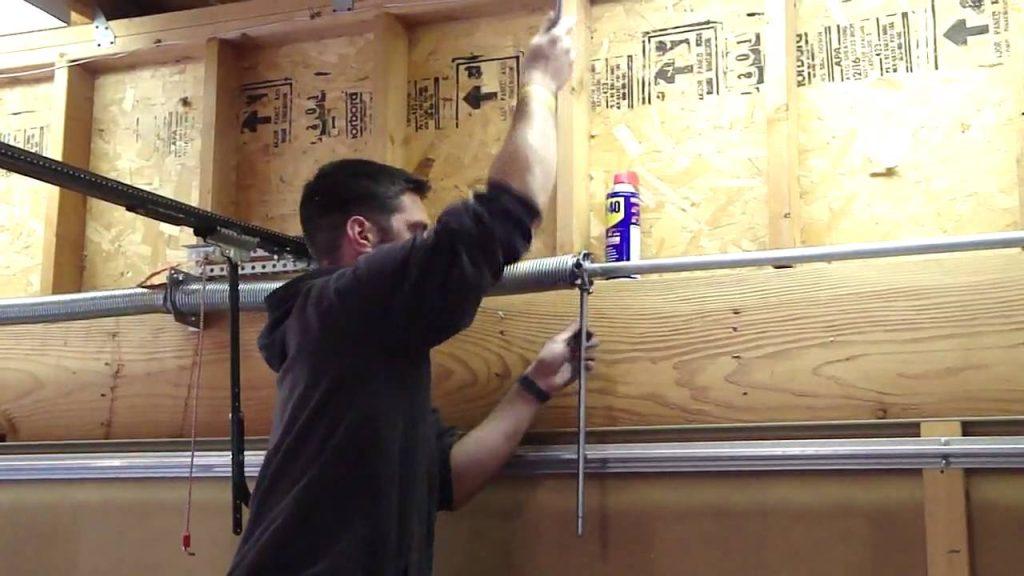Garage doors play a crucial role in securing our homes, and the springs are the unsung heroes that bear the weight of this responsibility. However, understanding the mechanics of garage door springs can be challenging for many homeowners. If you’ve ever wondered, “Which way to tighten garage door spring?” you’re not alone. In this comprehensive guide, we’ll unravel the mystery behind garage door spring tightening, providing you with the knowledge needed to ensure your garage door operates smoothly and efficiently.

Introduction: Decoding the Basics of Garage Door Springs
Before delving into the specifics of tightening garage door springs, let’s establish a foundational understanding of these essential components. Garage doors typically use two types of springs: extension springs and torsion springs. While extension springs are located above the upper tracks on both sides, torsion springs are mounted above the garage door itself. The tension created by these springs counterbalances the door’s weight, facilitating smooth opening and closing.
The Importance of Properly Tensioned Springs
Maintaining the correct tension in your garage door springs is crucial for several reasons. Firstly, it ensures the balanced operation of the door, preventing unnecessary wear and tear on various components. Secondly, it enhances the safety of your garage door, reducing the risk of sudden malfunctions or accidents. Lastly, properly tensioned springs contribute to the longevity of your garage door system, saving you money on potential repairs or replacements.
Read too: Why Does My Garage Door Open Halfway and How to Fix It: Unveiling the Mystery
Identifying the Need for Adjustment
Understanding when your garage door springs need adjustment is the first step in answering the question, “Which way to tighten garage door spring?” Signs that your springs may require attention include:
- Uneven Movement: If your garage door exhibits jerky or uneven movement during operation, it may indicate an imbalance in the spring tension.
- Unusual Noises: Creaking, popping, or snapping sounds when opening or closing the garage door could signal that the springs are under excessive stress.
- Visible Gaps: Inspect the springs for any noticeable gaps or stretches. Visible wear and tear may indicate the need for adjustment.
The Process of Tightening Garage Door Springs
Now, let’s address the central question: “Which way to tighten garage door spring?” The answer depends on whether you have extension or torsion springs.
- Tightening Extension Springs:
- For extension springs, the adjustment is typically made by moving the S-hook or adjusting the cable length.
- To increase tension, move the S-hook to a higher hole on the track hanger.
- Conversely, to decrease tension, move the S-hook to a lower hole.
- Tightening Torsion Springs:
- Torsion springs are adjusted by winding or unwinding the springs using a winding bar.
- To increase tension, turn the winding cone away from the center of the door.
- To decrease tension, turn the winding cone toward the center of the door.
Safety Precautions: A Must-Read Before Adjustment
Adjusting garage door springs involves working with high tension, making safety a top priority. Before attempting any adjustments, disconnect the power to the garage door opener and ensure you have the necessary tools and knowledge. If you’re unsure or uncomfortable with the process, it’s advisable to seek professional assistance to avoid potential injuries or damage to your garage door.
Conclusion: Mastering the Art of Garage Door Spring Adjustment
In conclusion, understanding “Which way to tighten garage door spring” is essential for maintaining the optimal performance and longevity of your garage door system. Regular inspection and timely adjustments can prevent costly repairs and ensure the safety of your household. Whether you have extension or torsion springs, the key lies in recognizing the signs of tension imbalance and addressing them promptly.
By mastering the art of garage door spring adjustment, you empower yourself to take control of your home’s security and convenience. Remember, if you ever find yourself uncertain or uncomfortable with the process, seeking professional assistance is a wise decision. Now that you’re armed with the knowledge, go ahead and give your garage door the care it deserves for seamless and reliable operation.



Leave a Reply